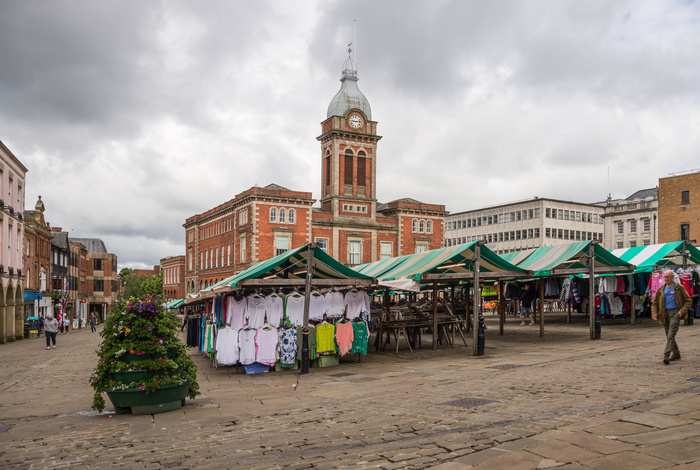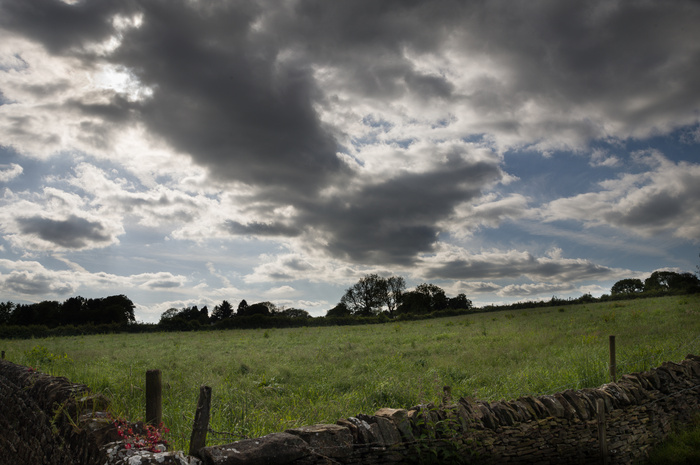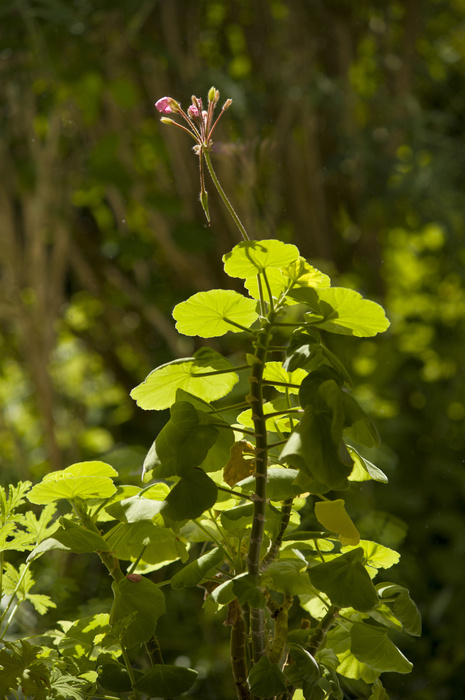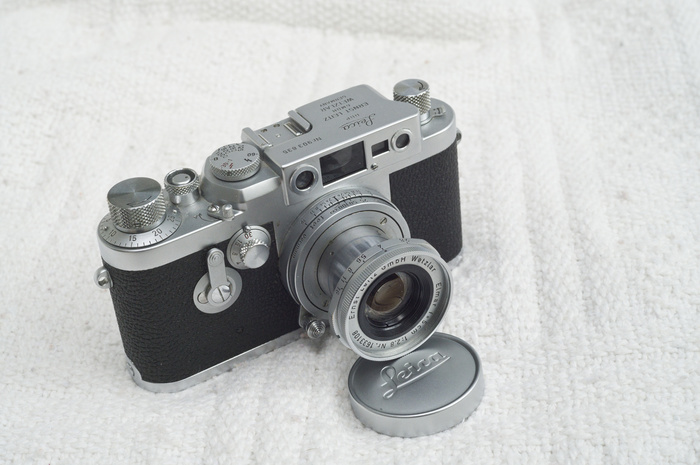Views On The Leica M11
08th August 2024
In: News, Members' Articles
Some of our members have risked financial ruin by purchasing a Leica M11. Ken Davis has written an article for the Newsletter about his experiences and we are publishing a shortened version here.
Let us know what you think by adding comments to this article.
Ken Davis - Experiences of the Leica M11
Introduction
Well, needless to say, I’ve bought one. I’ve written a longer article that appears in our newsletter. This extract summarises my view and other members can leave their views as comments.
What Do I Think?
What do I think? This is not a technical assessment, more experienced photographers than myself have posted their findings on the World Wide Web. This is about how I have found it personally:
1. It is a ridiculously expensive camera and, given other options are available to Leica M users in the ability of previous models, it is difficult to justify the expenditure.
2. If you are a fan of M lenses and you want the latest large sensors then there are alternatives in the form of the Leica SL series, the Panasonic SR series and other cameras BUT the M11 is the camera that has been designed to maximise the quality of M lens performance. The Leica M10R could also meet your needs with its 41 megapixel sensor.
3. Such a camera may come without a full manual, this is standard these days. Now you can register on the Leica site to obtain one BUT Leica will only issue one copy free of charge.
Why Did I Want the M11?
The main justifications were:
• better performance at higher ISO sensitivities
• flexibility of image size when you are photographing – I thought I’d concentrate on 36 megapixels
• Improved battery performance
• Improved handling.
• Multi-field metering - I had always been happy with the centre-weighted metering of the M’s since the M6 apart from times when it was fooled by too much brightness in middle distances so hadn’t thought much about the ability of the M11 to use multi-field metering all the time. However I’ve found a distinct improvement in successful automatic metering.
What Do I Think?
Now I’ve not used it ‘in anger’. However, so far the camera does meet the main justifications I listed above.
I thought I’d standardise on the 36 megapixel file size. However, on the weekend in Frodsham I found that when I was photographing the views from Overton Hill 60 megapixel file sizes were very, very useful for cropping into a section of the landscape that was the real subject of the picture.
The camera is a pleasure to use, the menu system is very logical and I have the function buttons set up to what I need. I have changed the facilities accessed by each function button and this is easy to do.
The overall image quality is certainly better than the MP 240 with a wider tonal range and the colours need less adjustment in a camera profile when developing them in Lightroom.
I read a set of posts on the web by Nick Rains from Australia:
https://www.youtube.com/watch?v=f7Z-U9N_DaA
Nick’s post gives good information on maximum ISO settings.
With regard to the white balance, reviews on the World Wide Web are somewhat critical of the M11’s performance and Cled Lewis and John Lawler use different settings. I’ve standardised on Daylight and I can adjust in Lightroom if I feel the need.
I save both DNG and JPEG files and now I find the JPEGs have better colour balance than my previous digital Ms. Remember I cannot comment on the performance of the M10.
Alternative Lenses
As with the M 240 and M10 you can add the electronic viewfinder (EVF)
The Visoflex 2 is expensive but turns the camera into an effective mirrorless single lens reflex allowing me to use my R lenses. You can just use the LCD on the rear of the camera but the EVF gives much more flexibility in viewing the image.
My R series lenses are older, 3-cam versions but the 60mm Macro Elmarit delivers high quality results. The 70-210 f4 zoom is a good lens but is at its limits with the 60mm sensor. The Leitz APO-TELYT-R f3.4 180mm works very well. I want to do some work with the 28mm PC Angulon in a suitable location.
Results
What’s the point of a 60 megapixel sensor when the images you are looking at are so small and most of the work I show ‘in public’ is via the World Wide Web and is therefore limited to about 1024 pixels in its longest side? From that point of view there is no point, but neither is there any point in a 24 megapixel image!!!
However if you are printing that’s a different matter and, although the photographs you see in this article are small, the original images are large enough to stand whatever processing you decide to do.
The image files are very flexible allowing lots of shadow detail recovery.
In terms of lens performance best results come from the fixed focal lengths but I do like using the 28-35-50 Tri-Elmar. This does seem to cause some chromatic aberration but that is easily fixed in Lightroom. I like the flexibility and portability of this lens and it saves me from changing focal lengths ‘in the field’.
Photographs
These photos are obviously limited in the level of resolution they show
The first photograph is of Chesterfield Market Place. This was taken on the Tri-Elmar set at 28mm. It was exposed to retain detail in the sky. The foreground was under exposed but has been easily recovered in Lightroom.
The second photograph of some shops in Chesterfield was taken to see how the camera handled the intense colours. The DNG file was a bit over-saturated for my liking so I lessened it by 10%. The shops are bright!
The third photograph was obviously taken for the sky, I allowed a small amount of highlight clipping where the clouds are lit by the sun, otherwise I would have had to under expose the foreground even more, this was lifted in Lightroom.
The fourth photograph was taken using the Leica R Series 70-210 Vario-Elmar. This is not one of the R Series heavyweights but was regarded as a fine lens in reviews. As I indicated in the article, it is at its limits with a 60 megapixel sensor but still gives pleasing results.
The fifth photograph of the Leica IIIG was taken using the 60mm Macro Elmar. I suppose this is the latest Leica rangefinder paying homage to the last of the screw thread rangefinders.
So, that’s what I think, let’s hear from other users about their experiences.

Chesterfield Market

Shops in Chesterfield

Peak District Sky

Geranium - Leica R Series 70-210 f4 zoom.

Leica IIIg taken with 60mm Macro Elmarit on the M11
Let us know what you think by adding comments to this article.
Ken Davis - Experiences of the Leica M11
Introduction
Well, needless to say, I’ve bought one. I’ve written a longer article that appears in our newsletter. This extract summarises my view and other members can leave their views as comments.
What Do I Think?
What do I think? This is not a technical assessment, more experienced photographers than myself have posted their findings on the World Wide Web. This is about how I have found it personally:
1. It is a ridiculously expensive camera and, given other options are available to Leica M users in the ability of previous models, it is difficult to justify the expenditure.
2. If you are a fan of M lenses and you want the latest large sensors then there are alternatives in the form of the Leica SL series, the Panasonic SR series and other cameras BUT the M11 is the camera that has been designed to maximise the quality of M lens performance. The Leica M10R could also meet your needs with its 41 megapixel sensor.
3. Such a camera may come without a full manual, this is standard these days. Now you can register on the Leica site to obtain one BUT Leica will only issue one copy free of charge.
Why Did I Want the M11?
The main justifications were:
• better performance at higher ISO sensitivities
• flexibility of image size when you are photographing – I thought I’d concentrate on 36 megapixels
• Improved battery performance
• Improved handling.
• Multi-field metering - I had always been happy with the centre-weighted metering of the M’s since the M6 apart from times when it was fooled by too much brightness in middle distances so hadn’t thought much about the ability of the M11 to use multi-field metering all the time. However I’ve found a distinct improvement in successful automatic metering.
What Do I Think?
Now I’ve not used it ‘in anger’. However, so far the camera does meet the main justifications I listed above.
I thought I’d standardise on the 36 megapixel file size. However, on the weekend in Frodsham I found that when I was photographing the views from Overton Hill 60 megapixel file sizes were very, very useful for cropping into a section of the landscape that was the real subject of the picture.
The camera is a pleasure to use, the menu system is very logical and I have the function buttons set up to what I need. I have changed the facilities accessed by each function button and this is easy to do.
The overall image quality is certainly better than the MP 240 with a wider tonal range and the colours need less adjustment in a camera profile when developing them in Lightroom.
I read a set of posts on the web by Nick Rains from Australia:
https://www.youtube.com/watch?v=f7Z-U9N_DaA
Nick’s post gives good information on maximum ISO settings.
With regard to the white balance, reviews on the World Wide Web are somewhat critical of the M11’s performance and Cled Lewis and John Lawler use different settings. I’ve standardised on Daylight and I can adjust in Lightroom if I feel the need.
I save both DNG and JPEG files and now I find the JPEGs have better colour balance than my previous digital Ms. Remember I cannot comment on the performance of the M10.
Alternative Lenses
As with the M 240 and M10 you can add the electronic viewfinder (EVF)
The Visoflex 2 is expensive but turns the camera into an effective mirrorless single lens reflex allowing me to use my R lenses. You can just use the LCD on the rear of the camera but the EVF gives much more flexibility in viewing the image.
My R series lenses are older, 3-cam versions but the 60mm Macro Elmarit delivers high quality results. The 70-210 f4 zoom is a good lens but is at its limits with the 60mm sensor. The Leitz APO-TELYT-R f3.4 180mm works very well. I want to do some work with the 28mm PC Angulon in a suitable location.
Results
What’s the point of a 60 megapixel sensor when the images you are looking at are so small and most of the work I show ‘in public’ is via the World Wide Web and is therefore limited to about 1024 pixels in its longest side? From that point of view there is no point, but neither is there any point in a 24 megapixel image!!!
However if you are printing that’s a different matter and, although the photographs you see in this article are small, the original images are large enough to stand whatever processing you decide to do.
The image files are very flexible allowing lots of shadow detail recovery.
In terms of lens performance best results come from the fixed focal lengths but I do like using the 28-35-50 Tri-Elmar. This does seem to cause some chromatic aberration but that is easily fixed in Lightroom. I like the flexibility and portability of this lens and it saves me from changing focal lengths ‘in the field’.
Photographs
These photos are obviously limited in the level of resolution they show
The first photograph is of Chesterfield Market Place. This was taken on the Tri-Elmar set at 28mm. It was exposed to retain detail in the sky. The foreground was under exposed but has been easily recovered in Lightroom.
The second photograph of some shops in Chesterfield was taken to see how the camera handled the intense colours. The DNG file was a bit over-saturated for my liking so I lessened it by 10%. The shops are bright!
The third photograph was obviously taken for the sky, I allowed a small amount of highlight clipping where the clouds are lit by the sun, otherwise I would have had to under expose the foreground even more, this was lifted in Lightroom.
The fourth photograph was taken using the Leica R Series 70-210 Vario-Elmar. This is not one of the R Series heavyweights but was regarded as a fine lens in reviews. As I indicated in the article, it is at its limits with a 60 megapixel sensor but still gives pleasing results.
The fifth photograph of the Leica IIIG was taken using the 60mm Macro Elmar. I suppose this is the latest Leica rangefinder paying homage to the last of the screw thread rangefinders.
So, that’s what I think, let’s hear from other users about their experiences.

Chesterfield Market

Shops in Chesterfield

Peak District Sky

Geranium - Leica R Series 70-210 f4 zoom.

Leica IIIg taken with 60mm Macro Elmarit on the M11
Comments
 By David Askham: Ken, you invited comments on your decision to buy a used Leica M11 camera, having listed your reasons and preferences. You have convinced yourself; who am I to to argue to the contrary. Leica will be well-pleased with your decision.
Admittedly your pictures are your very first to be produced by your M11 in your hands. Speaking frankly, they could well have been taken with almost any Leica camera, ever made. Not one cries out to me, "Made with an M11".
Having handled our LF President's M11, I do agree that it is delightful to hold and handle. It less noisy than my MP240 and neater in the hand. But is it worth my paying a premium of about £6,000 with a trade-in? I would need to think long and hard before doing so. Perhaps if I was still globe-trotting, it would be an easier decision. Meanwhile, I have a fine collection of Leica equipment to give me pleasure and convincing results for my remaining years on this planet.
By David Askham: Ken, you invited comments on your decision to buy a used Leica M11 camera, having listed your reasons and preferences. You have convinced yourself; who am I to to argue to the contrary. Leica will be well-pleased with your decision.
Admittedly your pictures are your very first to be produced by your M11 in your hands. Speaking frankly, they could well have been taken with almost any Leica camera, ever made. Not one cries out to me, "Made with an M11".
Having handled our LF President's M11, I do agree that it is delightful to hold and handle. It less noisy than my MP240 and neater in the hand. But is it worth my paying a premium of about £6,000 with a trade-in? I would need to think long and hard before doing so. Perhaps if I was still globe-trotting, it would be an easier decision. Meanwhile, I have a fine collection of Leica equipment to give me pleasure and convincing results for my remaining years on this planet. By Ken Davis: David,
as I said in my Newsletter article, any of the predecessors perform well enough to meet most peoples needs, a sensor of this size is of no relevance when the images produced on line amount to a tiny fraction of the original file sizes. The key for me has been the 'flexibility' in the DNGs to restore shadow detail from under exposed areas (done to preserve shadow detail) and the advantage of multi-field metering. The file sizes can be exploited to crop an images and still retain good quality but you have to get the other parameters right.
Whether such facilities are worth the considerable extra cost is doubtful but the camera is still good to use.
By Ken Davis: David,
as I said in my Newsletter article, any of the predecessors perform well enough to meet most peoples needs, a sensor of this size is of no relevance when the images produced on line amount to a tiny fraction of the original file sizes. The key for me has been the 'flexibility' in the DNGs to restore shadow detail from under exposed areas (done to preserve shadow detail) and the advantage of multi-field metering. The file sizes can be exploited to crop an images and still retain good quality but you have to get the other parameters right.
Whether such facilities are worth the considerable extra cost is doubtful but the camera is still good to use. By Cled Lewis: Hello Ken,
I thoroughly enjoyed your article on the M11, it is a fine camera.
It is expensive but then Leica cameras always have been and I assume that the M11 is probably in the same league as all its predecessors when it comes to cost.
I thought long and hard about buying the M11 as I imagine most people would but decided to bite the bullet .
There were many reasons, some of which you mentioned and I appreciate the ease with which you can avail yourself of these features.
I don’t believe I take better photos than I did and the camera is capable of far more than I will ever achieve, but then that applied to any Leica I had.
Did I need the M11? Of course not, but does it give me a lot of pleasure and if I happen to get things right then the quality shines through.
Cled
By Cled Lewis: Hello Ken,
I thoroughly enjoyed your article on the M11, it is a fine camera.
It is expensive but then Leica cameras always have been and I assume that the M11 is probably in the same league as all its predecessors when it comes to cost.
I thought long and hard about buying the M11 as I imagine most people would but decided to bite the bullet .
There were many reasons, some of which you mentioned and I appreciate the ease with which you can avail yourself of these features.
I don’t believe I take better photos than I did and the camera is capable of far more than I will ever achieve, but then that applied to any Leica I had.
Did I need the M11? Of course not, but does it give me a lot of pleasure and if I happen to get things right then the quality shines through.
Cled By Ken Davis: Thanks Cled. As I said in my cost comparison article in the Newsletter the M11 stands comparison with the original cost of a Leica M3 so it's expensive and hopefully as well made!!!!!! I agree with your sentiments.
By Ken Davis: Thanks Cled. As I said in my cost comparison article in the Newsletter the M11 stands comparison with the original cost of a Leica M3 so it's expensive and hopefully as well made!!!!!! I agree with your sentiments.